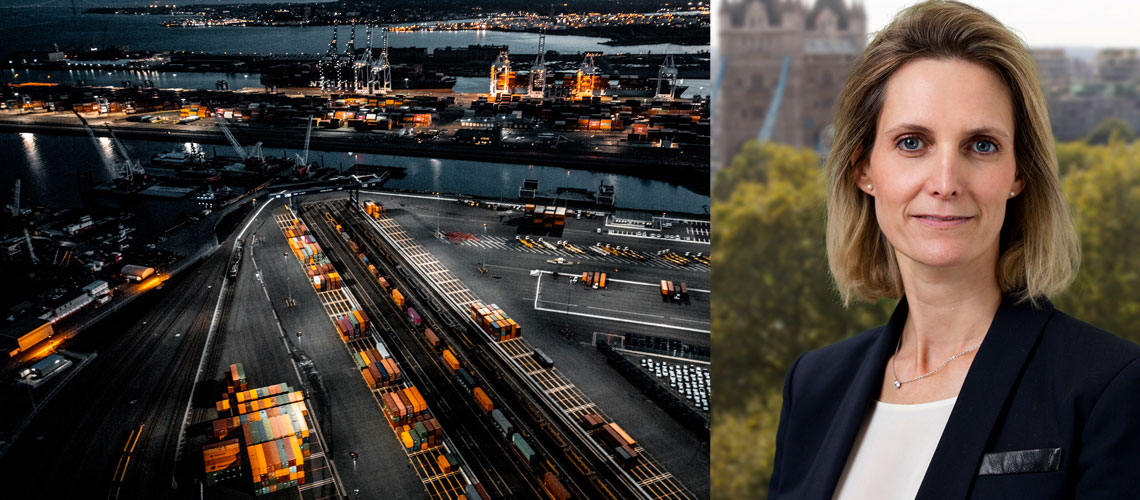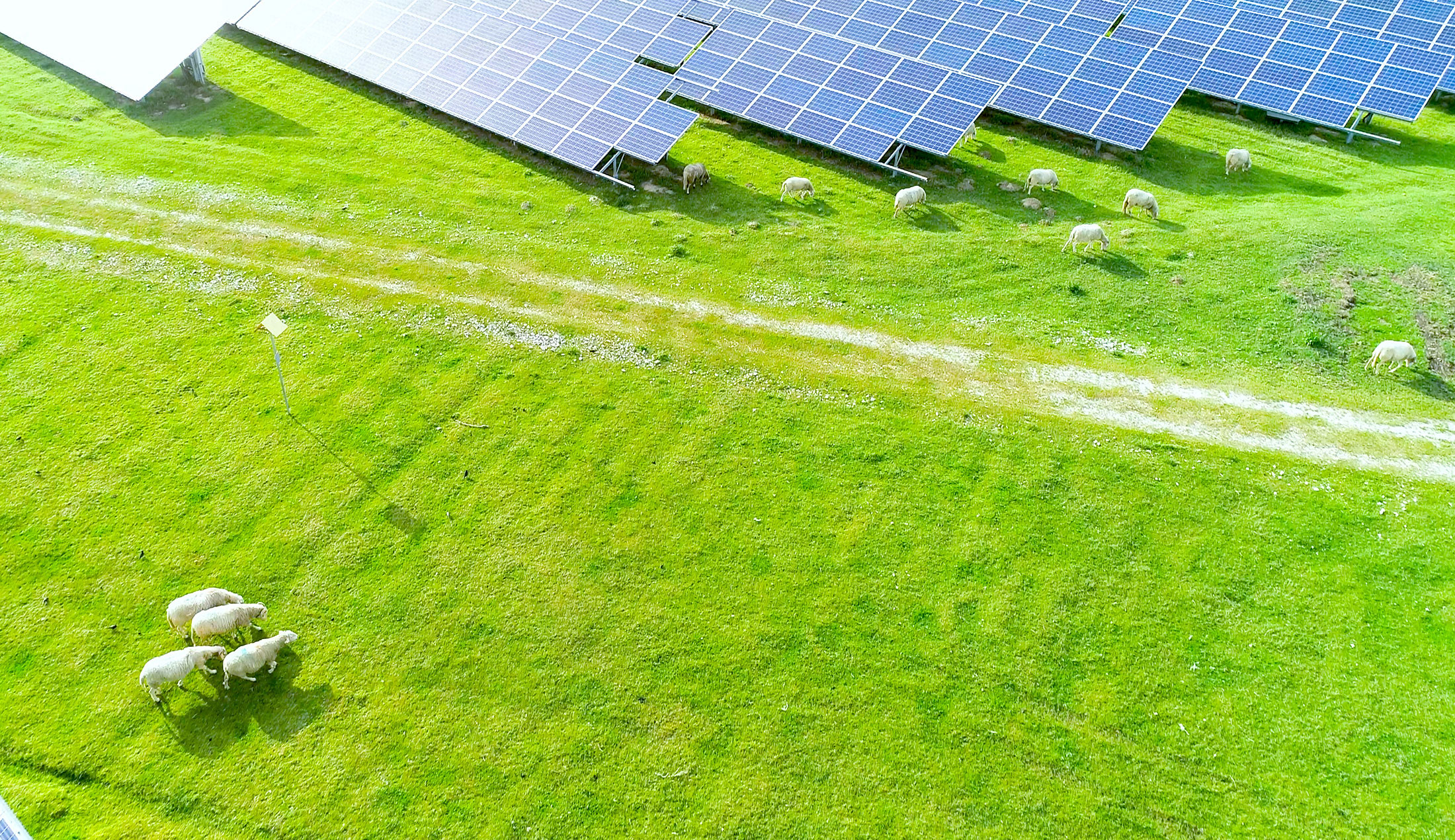
Published
- Financing
- Risk
- Export support
Uncertainty creates opportunity
Export credit agencies (ECAs) play a crucial role in a volatile market where many sovereigns and debt issuers find it harder to access capital, argues Cécile Camilli, Global Head of Development & Structured Export Finance at Société Générale, in an exclusive interview.
Rising inflation, recession worries, and geopolitical jitters combine to reduce the appetite for risk in global capital markets and make it harder for developing countries to finance investments required for continued growth and sustainable development. At the same time, the global shift to clean energy, zero-carbon transport and manufacturing relies on massive investments that require private and public interests to work together to foot the bill.
This is an environment where export credit agencies have an important role to play through their ability to bring partners from different sectors together and covering some of the risk in funding sizeable, long-term projects, according to Cécile Camilli, Global Head of Development & Structured Export Finance at Société Générale. “There is some uncertainty in the public capital markets. This makes it complicated for debt issuers to access capital – especially for high risk or emerging market borrowers. The challenging economic situation, with rising interest rates and a reduced willingness to take risk creates an opportunity for export finance to play a bigger role.”
How can the export credit system help ease the pressure?
CC: Export finance has always been seen as a counter-cyclical finance solution with more stable pricing, relying on a smaller circle of banks and lenders that can work together and alleviate market risk. The role of ECAs to mitigate rising credit risk is proving essential in a volatile market environment with spreads and rates increasing sharply.
What other challenges can the export credit system help to resolve?
CC: Looking beyond the current economic situation, there is the challenge of accelerating the energy transformation. The green revolution comes into a context where we have at the same time an economic recovery post-Covid that has become associated with high inflation and the crisis following the war in Ukraine, with the ensuing commodity and energy access disruption.
The ongoing re-industrialization and green transition taking place in developed markets needs to include developing countries as well. This requires massive capital investments at a time when public capital markets are being disrupted. So, now more than ever, there is a need to combine capital from public and private sources, and to engage ECAs and multilaterals to come together and mitigate some of the private capital risk. There is clearly a sense of urgency.
In a world where we face new technologies, new players and a new kind of market risk, banks and other private sector players need to team up with state agencies, development institutions and other public partners to be able to make the deals bankable. That’s where the ECAs play a critical role as catalysts to accelerate sustainable projects in energy transition and social development.
How does Société Générale view the importance of the ECAs and their roles as state-backed credit insurers?
CC: Export finance has always been a core activity at Société Générale and we have been a leader in that market for decades. Export finance is at the centre of the social and climate-positive impact that our bank is aiming to finance and support. Our corporate purpose is about building together with our clients a better and more sustainable future through responsible and innovative financial solutions. This is exactly what the ECAs are bringing. Together we are seeking to push sustainable projects, whether on the environmental side or on the social front and bringing the different partners from the private and the public side together to maximise and optimise financial solutions for sustainable projects.
Do you see a need for more flexible terms and conditions within export finance?
CC: Innovation has become an important part of export finance. We have seen over the last two years how ECAs have been able to offer new solutions and new products, whether in terms of tied or untied products, domestic or offshore products.
Should export credit agencies be given more leeway in what they are allowed to offer?
CC: We need to work alongside the OECD to optimise and modernise the Arrangement to make them more adapted to climate projects, whether it’s about granting preferential premiums or adjusting the tenor. The terms need to be reviewed and adapted to the current environment and we need a broader definition of what is considered green and climate-oriented, something which will probably be helped by the EU Taxonomy but not exclusively. Additional sectors should also be added in the field of climate change mitigation and adaption but also on broader sustainability terms including social impact. Export finance plays a critical role in emerging markets and we need to integrate the notion of trajectory, the notion of transition versus what is strictly acceptable from an EU Taxonomy standpoint as well as international standards used on the loan and bond markets.
More ammunition in terms of premiums and tenors is needed to make sure that we propose solutions that are adequately fitted to finance those long-term climate projects.
What do you think of E3F, the alliance of several leading European countries (including Sweden) aimed at accelerating the green transition by steering export credits towards a stronger focus on climate support?
CC: E3F has increased its member states from 7 to 10 since its creation, demonstrating its strategic role for all states which committed to stop new direct public support for international unabated fossil fuel by the end of 2022 in the context of the COP 26. By joining forces, member states and their respective ECAs can have a stronger impact on accelerating the transition away from fossil fuels. They can notably share understanding of sustainable projects, build a common climate methodology, develop dedicated incentives, or adapt the Statement on International Public Support for clean Energy Transition of the COP26 summit.
Any particular changes in conditions that you personally would like to see?
CC: Many cleantech and renewable projects would benefit from longer tenors. At the same time, you need to have banks that are able to lend beyond twenty-plus years and that won’t be easy to implement. On the premium side, I would appreciate a more differentiated approach to accommodate the needs of climate-dedicated projects in developed markets.
Many developing countries are suffering from growing indebtedness and rising debt servicing costs. How do you view this challenge?
CC: The sustainability of debt in many African nations is indeed a challenge and an important topic for discussion. Raising funds just to cope with the pandemic has added to the pressure, just like the current commodity crisis.
How can export finance help ease their debt burden?
CC: We’re actively working in three ways to support diversification of the hard-currency sovereign debt that is weighing quite heavily on many sovereigns and exposing them to FX risk, and we are trying to encourage local-currency financing. With our presence in 21 African countries and a very extensive network across the continent, we are able to lend in local currencies to support more projects with a dual approach, that is, with some euro/dollar financing with the support of ECAs and with local-currency tranches. Hopefully, we’ll see ECAs also being able to support and accompany financing in local currencies, just like EKN is doing on some projects. (Links to Softbank Japan and Colombia BRT project). It would also be useful for emerging countries to maintain eligibility of the 10% down payment in ECA financing to ease the service of their debt.
Secondly, we are encouraging the development of private debt in Africa, in order not to add to the sovereign indebtedness burden. That requires close cooperation with ECAs, because we deal with a different kind of credit risk when private companies borrow. These may not have a long track record, and it requires more local expertise and extensive research to assess the risks.
Thirdly, we support public/private partnerships in Africa, and we are looking at non-recourse financing for some of the projects. This too requires close cooperation with ECAs and multilaterals to make sure there is a bankable structure in place that is acceptable in terms of legal framework, PPAs offtake, and overall structuring.
Finally, how do you view the cooperation with EKN?
CC: Our cooperation with EKN dates a long way back and spans several decades of fruitful deals in sectors such as telecom, energy production, automotive and infrastructure. We are currently engaged in several ongoing sustainable projects across various geographies.
I find EKN to be very pragmatic and business oriented. We are here to find solutions together and the drive to be solutions oriented with a customized approach lets us bring added value together.
Team Sweden* is a very efficient and powerful way to support cooperation and promotion of Swedish industry and supply chains and offers access to a wide pool of Swedish sourcing.
*) Team Sweden is a cooperation between EKN, SEK (The Swedish Export Credit Corporation), Swedfund, Business Sweden and the Ministry for Foreign Affairs.

Climate
EKN analyses and reports the climate-related financial risks and opportunities that the agency operations and the provision of guarantees give rise to. We work actively with keeping up to date with climate issues, in part through our collaboration with international export credit organisations and through consultation with scientists.
Climate